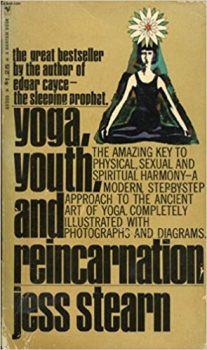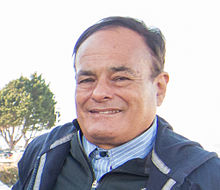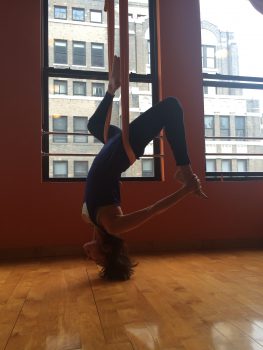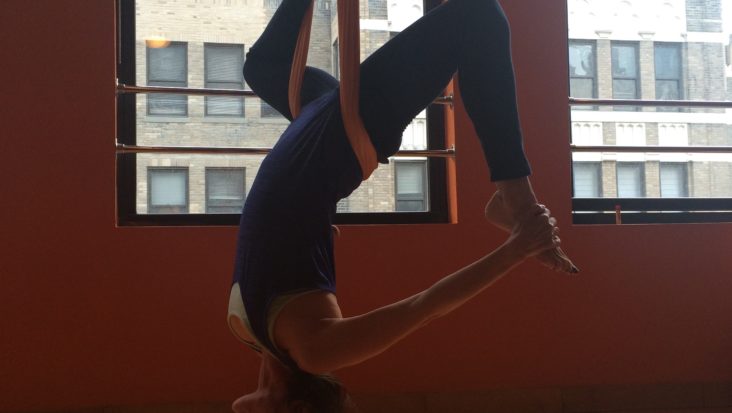
Somebody told me I should read it: Yoga, Youth, and Reincarnation, by Jess Stern. The year was 1967, and I’d just graduated from high school in Kansas City. I’d always been interested in religion and spirituality, parapsychology and the Big Picture. Although I was officially Catholic, I’d experienced all kinds of religions, attending weddings and funerals and bar mitzvahs of the ethnically eclectic patients of my dad, an osteopathic physician. In addition, our live-in housekeeper and my first guru, a grandmother-aged woman I called Dede, had long regaled me with tales of Rosicrucian cosmology, Christian Science healings, and the power of positive thinking.
I was already onboard with reincarnation before reading the Stern book, but yoga was something else, foreign, at times confused with yogurt, and probably heretical. The book, the story of a middle-aged guy’s encounter with a – brace yourself for this one – yoga teacher(!) fascinated me. I’d long battled overeating and overweight and dismissed exercise on principle, but here was this lovely system that brought the physical and spiritual together. It wasn’t like gym class, where your soul had to stay in the locker.
 I read the Yoga, Youth, and Reincarnation several times, and the other two books I could find on the subject, Yoga for Americans and Forever Young, Forever Healthy, both by the celebrated Russian-born yogini, Indra Devi. When I moved to London the following spring, I sought out a hatha yoga class with a dynamic South African instructor, Stella Cherfas (who, by the way, is 93 now and still teaching).
I read the Yoga, Youth, and Reincarnation several times, and the other two books I could find on the subject, Yoga for Americans and Forever Young, Forever Healthy, both by the celebrated Russian-born yogini, Indra Devi. When I moved to London the following spring, I sought out a hatha yoga class with a dynamic South African instructor, Stella Cherfas (who, by the way, is 93 now and still teaching).
It was in London that I started on my yoga-prompted vegetarian journey. At that time, turning from meat was a given, if you came to yoga for anything more than to lose some weight or get help with back pain. I learned about veganism a few years later and couldn’t argue with its morality, but it seemed too difficult, too monastic, and too full of the dreaded “carbs” for someone who alternated between dieting and binge-eating as if there were no other options. My finally taking the vegan plunge grew out of the recovery program I’d sought for my eating issues. The ability to make this ethical and dietary choice for myself was part of the “spiritual awakening” central to the 12-Step process.
This was the early 80s. I’d known the physical side of yoga as hatha: 83 classic poses, paired with the breath, entered unhurredly and held with conviction, slowly released, followed by relaxation lasting as long as the posture had been held, allowing its healing benefits to process. Now I was seeing variations, Iyengar first, then Kundalini, and as time passed Ashtanga, Vinyasa, Bikram, and more. Outside Integral Yoga or Sivananda Yoga studios, it was increasingly difficult to find the kind of class I wanted, and even more challenging to come upon an instructor who didn’t eat meat. I was aware that traditional yoga had never been vegan, but it had been strictly vegetarian, with ahimsa, non-killing, nonviolence, at its core.

I love the story the late Professor Rynn Berry used to tell about the true yogi, the genuine practitioner of ahimsa. “If she is in the woods and sees a deer, and a hunter asks which way the deer went, the yogi is aware of the proscription against lying, but she lies anyway, because ahimsa, reverence for life, is the most important virtue.
“While the yogi honors the teaching against taking what is not one’s own, if she can steal the hunter’s arrows or bow, thus saving the life of the deer, the stealing is sanctioned because ahimsa supersedes asteya.
“And although she respects the chastity called for by bramacharya, if it’s possible to seduce the hunter and divert his interests away from killing, she is yogic in making this choice because ahimsa reigns supreme.”
In sharing this tale with non-vegan yoga practitioners, I’ve many times been met with a blank stare. One young woman actually said, “Eww, I wouldn’t sleep with a hunter. That’s gross.” And then she ordered a chicken wrap and a chai latte with nonfat milk, no foam.
With notable exceptions such as Jivamukti, the ahimsa-based practice begun in 1990 by Sharon Gannon and David Life, veganism runs into two obstacles in the world of yoga. One is represented by that yoga student with the chicken wrap. Yoga has grown so rapidly that, in the majority of its centers, only pieces of the full system have kept up: Om shanti, Namaste, headstand, downward-facing dog. The yamas and niyamas, traditionally studied before any other aspects of yoga, tend to be discovered by only the most serious students, and then often rationalized away with, “This is a different time.” A time when one can be a yogi and not a vegetarian is different indeed.
The other obstacle is the traditional Hindu and Indian reliance on dairy. The cow is sacred and so is the milk, the panir, the ghee. While I feel a camaraderie with all vegetarians, I’ve found that lacto-vegetarian yogis, most of them American so they don’t even have the cultural card to play, argue against veganism even more vociferously than omnivores do.
They have tradition on their side, and they love to tell me about the humane milk from Hare Krishna farms, where the calves nurse freely, no spent cow goes to slaughter, and the males, too, live fully and die of old age. This is sufficiently counterintuitive, in a logistical and economic sense, that I’m not convinced it’s the whole story. Even if it were, it’s simply not possible to produce enough milk that way to meet the needs of all the milk-drinkers – or even all the yogis. After a discussion on this topic with an impassioned Vinyasa instructor, I went to her fridge to get some lemon for my water and saw Chobani yogurt and Trader Joe’s milk, nothing from happy Hare Krishna cows living less than two miles away. This so proved my point, but not to my worthy adversary.
To me, yoga is vegan because ahimsa, when defined by the living of it, is veganism. Yoga is vegan because eating plant-sourced foods gives our bodies the best chance of being healthy, beautiful, and strong. Yoga is vegan because yoga is evolutionary. Its teachings state that we’re not just growing through a single lifetime but through an ageless, timeless eternity on a spiritual mission too grand to fathom while we’re on this planet. And because all life is part of this upward progression, teachings and systems and traditions evolve, too. Dairy has been part of yoga (and part of its close relative on the healthcare side, Ayurveda) for thousands of years. That’s a fact. And veganism can be part of yoga and Ayurveda for thousands of years to come. That’s the truth.
 Victoria Moran (http://main-street-vegan.snw02yqyqm-yjr3oz1jz41m.p.temp-site.link) is the author of fourteen books on spirituality and wellbeing, including Creating a Charmed Life, Main Street Vegan, and The Good Karma Diet. She is the host of the Main Street Vegan podcast and founder and director of Main Street Vegan Academy, training and certifying Vegan Lifestyle Coaches and Educators in a magical, 6-day course in New York City. She is also producer of the upcoming documentary, A Prayer for Compassion, introducing vegan living to people who identify as religious or spiritual. She is shown here engaged in a recent passion, aerial yoga. While for years avoiding any yoga that didn’t seem “classical,” she diverted at age 65 to a non-classical form indeed, but she still leads twice-a-week yoga classes in her building, in traditional hatha style. (Note: This post was originally written for the website, www.YogaIsVegan.com, the brainchild of Main Street Vegan Academy graduate, Holly Skodis, VLCE.)
Victoria Moran (http://main-street-vegan.snw02yqyqm-yjr3oz1jz41m.p.temp-site.link) is the author of fourteen books on spirituality and wellbeing, including Creating a Charmed Life, Main Street Vegan, and The Good Karma Diet. She is the host of the Main Street Vegan podcast and founder and director of Main Street Vegan Academy, training and certifying Vegan Lifestyle Coaches and Educators in a magical, 6-day course in New York City. She is also producer of the upcoming documentary, A Prayer for Compassion, introducing vegan living to people who identify as religious or spiritual. She is shown here engaged in a recent passion, aerial yoga. While for years avoiding any yoga that didn’t seem “classical,” she diverted at age 65 to a non-classical form indeed, but she still leads twice-a-week yoga classes in her building, in traditional hatha style. (Note: This post was originally written for the website, www.YogaIsVegan.com, the brainchild of Main Street Vegan Academy graduate, Holly Skodis, VLCE.)


Dearest Victoria. Thank you, Barbara x
Bless you, Barbara. Just thinking about you makes me happy.
Thank you for this wonderful piece. When I moved to NYC I was determined to deepen my yoga practice and asked for guidance. I was led to veganism. Ahimsa has been my primary practice ever since. I could not have known the profound shifts and the joy that awaited me. This is yoga!!
Oh, Alicia, I think of you so fondly! Please come into the city this summer so we can have lunch and catch up.
Very inspiring piece. By the way, if you are still looking for a vegan/ahimsa based yoga studio that emphasizes spirituality AND intense asana, try a class with Sri Dharma Mittra on West 23rd St.
Thanks — I’ll be sure to check that out.
Thank you for speaking out about this, Victoria. There’s such a disconnect. I don’t think any of the teachers at my yoga studio are vegetarian, let alone vegan. I just don’t understand how they can violate the principal of ahimsa so blindly. Then, I’m on the Board of an animal shelter. And everyone insists that we serve meat and dairy at our fundraisers because that’s what people want. Sigh.
There are so many disconnects. I tell myself that I’m sure I have plenty of them, too, and just keep moving (forward, I hope). My graduate, Holly Skodis, has a website called “Yoga Is Vegan,” and I have a couple of her tank tops. I wear them when I teach. It’s a subtle message, but a message nonetheless.
Victoria, your words express my feelings about yoga and veganism so clearly – and I have been trying to explain this for years – in my yoga classes as well as in daily encounters (with anyone who will listen, frankly) Thanks for sharing such an inspiring guide to encourage yoga as a work-in, rather than a work out. Much love.
Bless you, Sande. You area true yogini.
I enjoy reading your pieces because they represent so much insight into life’s journey. By reading about your personal journey, it allows me to reflect on my own and appreciate it for what it is, what is has been and what it will be. Life is about choices, and for me, having a “true north” allows me to be confident in those choices.
How sweet of you to write this! You have a pretty wonderful “true north”!